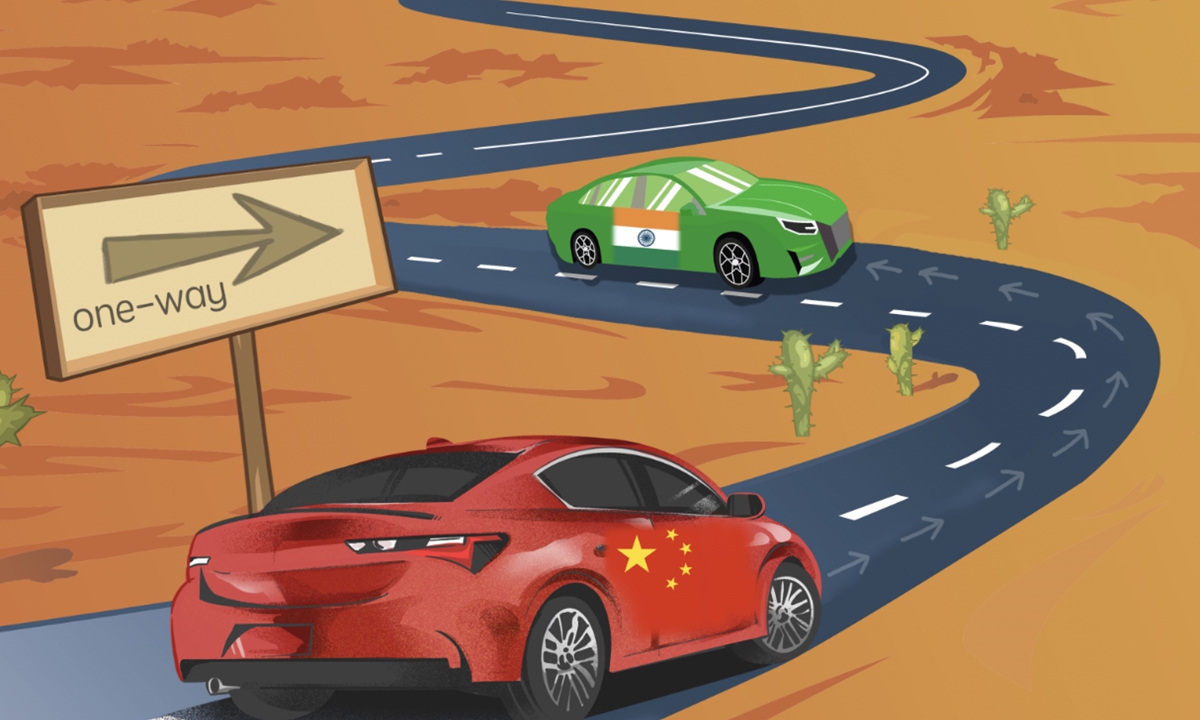A rapprochement road map for Beijing and New Delhi benefits both countries
By Rajeev Sharma Source: Global Times Published: 2020/7/9 18:38:41

China India Photo: GT
China and India, Asia's largest and third-largest economies, have been engaged in a dangerous military standoff for the past nine weeks, which could wreck their economies and many precious things if the situation isn't amicably eased in double-quick time.Much has changed for both the neighbors since 1962 when the two fought for a month. The trust deficit that plagued China-India relations since the 1962 war was put on the back burner. Since then the two giant neighbors have learned to minimize their divergences.
However, the steady deterioration of bilateral relations since the night of May 5, when the latest standoff began, has practically evaporated all the diplomatic gains of the past years in one stroke. The current crisis is the biggest threat to normal ties between the two sides since 1962. It's a lose-lose situation for both. Their common objective must be to build a better and peaceful future for their peoples and not a military buildup against one another.
This is not the time to split hairs about who is right and who is wrong. The reality is bilateral relations have been wrecked - perhaps by the two sides' own respective decisions and moves, or perhaps because of extraneous factors or actors.
Timely, concrete and effective actions are needed to mend the state of affairs.
But such things are easier said than done. Who will bell the cat? Which side will take the initiative in de-escalating the situation in this scenario? After all, whichever of the two makes the first overture of peace risks to be seen as weaker.
This is where diplomacy comes into play. Astute and mature diplomacy can achieve what political and military leadership can't. Diplomats from the two sides can, and should, talk behind the scenes and break the ice.
But before they do that, the two governments must give them unambiguous instructions that they don't want a war and they favor a peaceful resolution to the current face-off. This is the prerequisite and a starting point.
Once the diplomats from the two sides are able to quietly prepare the ground, the matter can be discussed at the level of national security advisors or foreign ministers, or both in that order. This is a tried and tested formula and paid dividends three years ago as the two sides had successfully resolved the 73-day-old Doklam standoff without a single shot being fired.
Simultaneously, the two sides must take care of each other's sensitivities and political compulsions until such time as diplomacy delivers. In fact, this part of bilateral engagement is going to be most crucial and, if not handled adroitly, can prove to be counterproductive.
What I'm saying here essentially is that the two sides must not cross each other's well-known redlines. The entire architecture of rapprochement depends on this point solely.
China should keep in mind that Indian Prime Minister Narendra Modi won his second successive general elections in May 2019 solely on nationalistic fervor, even though Modi's critics at home or abroad have dubbed his brand of nationalism as jingoism. Modi can ramp up domestic and international political discourse with his biggest weapon: nationalism.
China and India would do well to pay heed to the golden words of famous Hindi poet Rahim (1556-1627) who was one of the nine jewels in the court of Mughal emperor Akbar (1556-1605). Let me paraphrase the Hindi couplet into English: Don't break the thread of love because it can't be rejoined; and if rejoined, it leaves a knot.
This should be the template for China and India to wipe away the ugly scar of the recent developments in the Galwan Valley.
The author is a New Delhi-based strategic analyst and columnist. Follow him on Twitter at @Kishkindha. opinion@globaltimes.com.cn
Posted in: VIEWPOINT